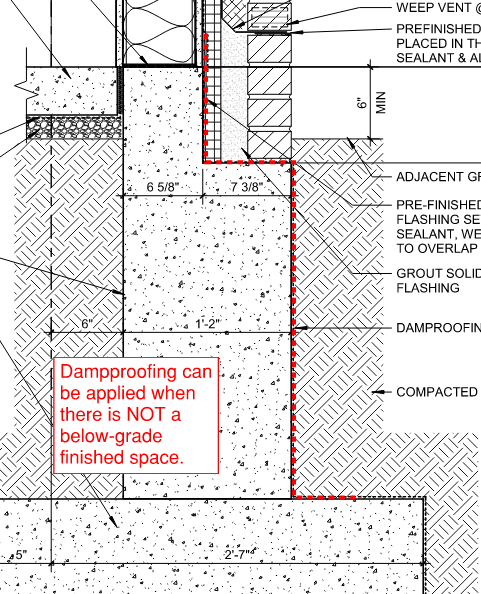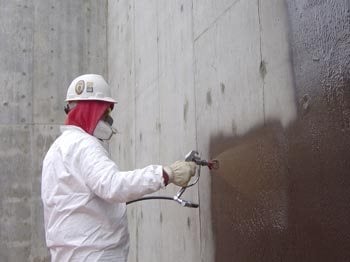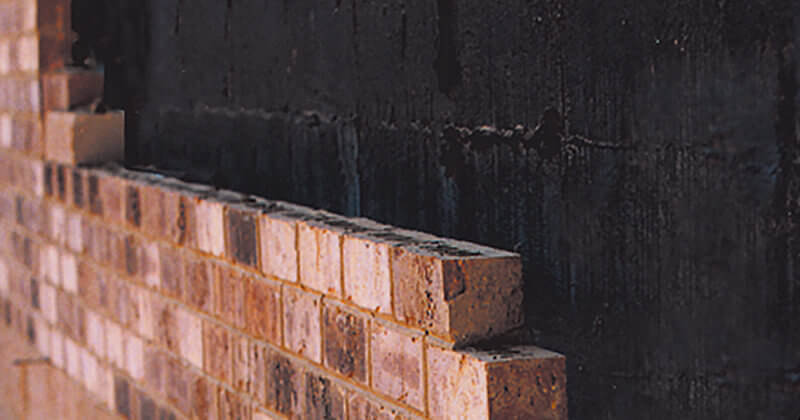Beginner’s guide to understanding rising damp and damp removal newcastle
Beginner’s guide to understanding rising damp and damp removal newcastle
Blog Article
Discovering the Different Strategies and Solutions for Effective Damp Proofing
Moisture in buildings postures considerable obstacles to both architectural stability and indoor air high quality. Various strategies and services have emerged to fight this pervasive problem. From standard damp-proof membrane layers to innovative chemical therapies, each approach provides distinct benefits. Comprehending these options is vital for reliable dampness control. Nevertheless, choosing the right service relies on particular building problems and needs, triggering additional expedition into one of the most reliable damp proofing strategies offered.
Comprehending the Sources Of Wetness
Although wetness can occur from numerous resources, comprehending these causes is essential for efficient removal. Typically, wetness stems from 3 main sources: rising damp, permeating moist, and condensation. Rising moist takes place when groundwater travels upwards with porous materials, such as brick or stone, usually as a result of an absence of an effective obstacle (mould treatment newcastle). Permeating wet is commonly triggered by outside factors, consisting of roofing system leakages, defective gutters, or harmed walls, enabling water to infiltrate a residential property. Condensation, on the various other hand, arises from excess dampness in the air, commonly exacerbated by inadequate air flow and temperature level distinctions, leading to water beads forming on surfaces. Determining these underlying problems is essential, as each kind of wetness needs a customized technique for removal. Proper evaluation helps in figuring out the most effective remedies, ultimately protecting the architectural stability of a structure and improving interior air high quality
Conventional Damp-Proof Membrane Layers

Chemical Damp-Proofing Solutions
Chemical damp-proofing remedies supply a cutting-edge method to stop dampness intrusion in structures. These methods commonly entail the application of liquid chemicals that pass through masonry and form an obstacle against rising moist. Generally utilized chemicals include silanes, siloxanes, and various other water-repellent agents that react with surface products to produce a hydrophobic layer.The application process typically needs boring holes right into the walls, infusing the chemical solution, and allowing it to cure. This approach is specifically advantageous for older frameworks where typical damp-proof membranes may be not practical. Chemical damp-proofing can be much less disruptive and extra affordable than substantial restoration projects.While efficient, these services depend on correct application and ecological problems for peak efficiency. mould removal newcastle. Routine maintenance and surveillance are important to assure the durability of the damp-proofing treatment. Overall, chemical damp-proofing represents a versatile option for guarding structures against moisture-related damage
Cavity Wall Surface Construction Techniques
Cavity wall surface building and construction methods use many benefits, specifically in wetness control and energy efficiency. By incorporating an air void between 2 layers of stonework, these wall surfaces successfully alleviate water ingress while improving insulation. This combination not only safeguards frameworks from dampness yet additionally adds to reduced power intake.
Advantages of Cavity Wall Surfaces
When taking into consideration effective moist proofing methods, the benefits of dental caries wall surfaces stick out plainly. Tooth cavity wall surfaces are composed of 2 separate layers, producing an air space that properly lowers dampness infiltration. This layout minimizes the danger of wetness, as the outer wall works as a barrier versus rainfall and water ingress. Furthermore, cavity walls enhance thermal insulation, which adds to energy efficiency by reducing heat loss. They also provide sound insulation, aiding to develop a quieter interior environment. Additionally, the air space enables air flow, which helps in dampness control and decreases the possibility of mold growth. These benefits not only improve the general convenience of a building however also add to its durability and architectural integrity.
Dampness Control Approaches
Effective wetness control approaches are essential in cavity wall construction to assure long-lasting security against wetness. One key method entails the incorporation of weep openings, which facilitate water drain from the tooth cavity, protecting against build-up. Furthermore, making use of breathable membranes can aid manage moisture levels while allowing entraped vapor to escape. Proper positioning of insulation is likewise vital, as it must not block drain courses. Furthermore, making sure that the outer fallen leaves of the dental caries wall surface are built with water-resistant products improves total resilience. Routine upkeep checks are vital to recognize any type of blockages or damages early, protecting the structure's stability. Inevitably, a combination of these strategies forms a robust protection versus dampness intrusion in dental caries walls.
Insulation and Energy Performance
Insulation plays a vital function in boosting power efficiency within cavity wall construction. By incorporating protecting products, these wall surfaces produce a thermal barrier that lessens heat loss and reduces energy consumption. Efficient insulation not only assists maintain a secure interior temperature level yet also minimizes the risk of moisture, as it prevents condensation within the wall surface cavity. Various techniques, such as making use of rigid foam boards or mineral wool, can be utilized to attain perfect insulation efficiency. Additionally, appropriate installment is important to guarantee that spaces and voids are lessened, which can or else jeopardize power efficiency. Eventually, a well-insulated tooth cavity wall contributes considerably to total sustainability and reduces cooling and heating prices for homeowners.
Exterior Damp Proofing Approaches
External damp proofing techniques are essential for protecting structures from moisture infiltration. Two efficient strategies include the application of water resistant membrane layers and the setup of French drains. These solutions aid alleviate water build-up and maintain the stability of buildings.
Waterproof Membrane Application
While different methods exist for preventing wetness access, the application of water resistant membranes stays a very efficient exterior damp proofing technique. These membranes are typically made from products such as polyethylene, rubber, or modified bitumen, providing a robust obstacle against water infiltration. The installment process involves applying the membrane to the outside surface areas of structures or wall surfaces, making sure total coverage to protect against leakages. Proper adhesion and sealing at joints are important to making the most of efficiency. Water-proof membranes can be used in numerous kinds, including fluid finishes and sheet membrane layers, enabling for adaptability based upon the certain requirements of the framework. This approach not just secures buildings from moisture however also boosts their longevity and architectural integrity.
French Drainpipe Installment
One reliable approach for managing groundwater and stopping wetness accumulation around a structure's structure is the setup of a French drainpipe. This drainage system contains a trench loaded with crushed rock and a perforated pipe that redirects surface water far from the structure. Proper setup calls for cautious preparation, making website certain that the drain slopes away from the framework to assist in ideal water circulation. Additionally, the area of the drainpipe is crucial; it must be placed in locations susceptible to pooling or excess dampness. Routine maintenance, including clearing up debris from the crushed rock and guaranteeing the pipe continues to be unblocked, is essential for long-lasting effectiveness. Inevitably, a well-installed French drain can substantially reduce the threat of water-related issues in cellars and structures.
Interior Waterproofing Methods
Interior waterproofing techniques are crucial for shielding a structure's interior from moisture seepage and potential water damages. These methods commonly entail the application of specialized materials and methods designed to produce a wetness obstacle within the structure. One common technique is making use of water-proof finishes or sealers on walls and floorings, which protect against wetness from permeating surfaces.Additionally, setting up interior drain systems, such as sump pumps, can effectively take care of water accumulation in cellars and crawl spaces. An additional method involves making use of vapor obstacles, which are set up to hinder moisture activity from the ground into living spaces.Moreover, attending to any splits or spaces in walls or foundations with suitable sealants guarantees a comprehensive defense against water intrusion. By implementing these indoor waterproofing strategies, residential or commercial property owners can substantially lower the risk of mold and mildew growth, architectural damages, and other moisture-related problems. Proper implementation of these methods is crucial for long-lasting security and building integrity.
Routine Upkeep and Inspection Practices
Normal maintenance and assessment methods are vital for guaranteeing the lasting effectiveness of wet proofing remedies in any building. Regular checks enable residential property owners to determine early signs of wetness intrusion, such as peeling off paint, mold and mildew growth, and musty smells. These signs can indicate underlying issues that need immediate attention.Inspections should be carried out at least every year, concentrating on prone areas like basements, creep rooms, and outside walls. During these evaluations, homeowner ought to examine sealants, drainage systems, and air flow to validate they function correctly.Additionally, maintaining downspouts and seamless gutters is necessary, as blocked systems can bring about water buildup near the structure. Implementing a routine maintenance timetable, together with prompt repairs, can considerably expand the lifespan of damp proofing procedures and shield the architectural stability of the building. Positive steps inevitably add to the general health and wellness and security of the living setting.
Often Asked Inquiries
How Much Time Does Damp Proofing Typically Last?
The duration of damp proofing efficiency varies, commonly lasting in between 20 to 50 years. Factors such as application quality, ecological conditions, and upkeep methods significantly influence the longevity of the damp proofing treatment.

Can I Damp Proof My Home Myself?
The individual considered the feasibility of do it yourself damp proofing. With correct research study and the ideal materials, it is feasible. They likewise recognized the importance of professional assistance to assure resilient efficiency and avoid future issues.
What Are the Indicators of Inefficient Damp Proofing?
Signs of ineffective damp proofing consist of consistent moldy smells, visible mold and mildew development, peeling paint, damp spots on walls, and wood degeneration - damp specialist newcastle. House owners must deal with these concerns quickly to protect against further damage and health and wellness issues
Does Damp Proofing Affect Indoor Air Top Quality?

Just How Much Does Professional Damp Proofing Cost?
Specialist damp proofing expenses differ substantially, usually varying from $1,000 to $5,000 relying on the home's dimension, the degree of the wet concern, and chosen techniques. Each situation requires a tailored assessment for exact pricing. Typically, wetness originates from 3 key resources: increasing wet, penetrating wet, and condensation. When thinking about reliable damp proofing techniques, the benefits of tooth cavity walls stand out plainly. External moist proofing approaches are necessary for protecting frameworks from dampness seepage. While different methods exist for stopping moisture access, the application of water-proof membrane layers continues to be an extremely effective exterior wet proofing method. Indications of ineffective damp proofing include consistent stuffy odors, noticeable mold growth, peeling paint, moist spots on wall surfaces, and timber degeneration.
Report this page